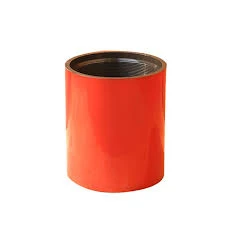- Afrikaans
- Albanian
- Amharic
- Arabic
- Armenian
- Azerbaijani
- Basque
- Belarusian
- Bengali
- Bosnian
- Bulgarian
- Catalan
- Cebuano
- Corsican
- Croatian
- Czech
- Danish
- Dutch
- English
- Esperanto
- Estonian
- Finnish
- French
- Frisian
- Galician
- Georgian
- German
- Greek
- Gujarati
- Haitian Creole
- hausa
- hawaiian
- Hebrew
- Hindi
- Miao
- Hungarian
- Icelandic
- igbo
- Indonesian
- irish
- Italian
- Japanese
- Javanese
- Kannada
- kazakh
- Khmer
- Rwandese
- Korean
- Kurdish
- Kyrgyz
- Lao
- Latin
- Latvian
- Lithuanian
- Luxembourgish
- Macedonian
- Malgashi
- Malay
- Malayalam
- Maltese
- Maori
- Marathi
- Mongolian
- Myanmar
- Nepali
- Norwegian
- Norwegian
- Occitan
- Pashto
- Persian
- Polish
- Portuguese
- Punjabi
- Romanian
- Russian
- Samoan
- Scottish Gaelic
- Serbian
- Sesotho
- Shona
- Sindhi
- Sinhala
- Slovak
- Slovenian
- Somali
- Spanish
- Sundanese
- Swahili
- Swedish
- Tagalog
- Tajik
- Tamil
- Tatar
- Telugu
- Thai
- Turkish
- Turkmen
- Ukrainian
- Urdu
- Uighur
- Uzbek
- Vietnamese
- Welsh
- Bantu
- Yiddish
- Yoruba
- Zulu
Understanding the Functions of Well Tubing and Casing in Oil and Gas Operations
Understanding Well Tubing and Casing Essential Components of Oil and Gas Production
In the oil and gas industry, efficient extraction of resources is paramount. Two critical components that ensure the integrity and productivity of wells are tubing and casing. Understanding the functions, materials, and importance of these elements is crucial for professionals in the field and stakeholders involved in drilling operations.
Casing The Borehole’s Backbone
Casing is a series of steel pipes that are placed in the borehole after drilling has been completed. Its primary purpose is to provide structural support to the well and to isolate different geological formations. This prevents the walls of the well from collapsing and protects freshwater aquifers from contamination by oil and gas. Casing also facilitates the management of pressure within the well, preventing blowouts and ensuring safe operations.
The installation process of casing involves multiple steps. First, the well is drilled, and a cementing process is performed where cement is pumped down the casing to fill the annular space (the area between the casing and the wellbore). This cement hardens, forming a seal that enhances the well's integrity. Various types of casing are used depending on the depth and geological conditions of the well, including surface casing, intermediate casing, and production casing.
Tubing The Production Line
Once the casing has been set and cemented, tubing is inserted into the production casing. Tubing serves as the conduit for oil and gas to flow to the surface. Unlike casing, which is fixed in place, tubing can be removed and replaced as necessary, making it a more flexible component of the well system.
well tubing and casing

Tubing is usually a smaller diameter compared to casing and is designed to withstand the pressure of the produced hydrocarbons. It is critical for enhancing the efficiency of production, especially in vertical, deviated, and horizontal wells. The materials used for tubing must be resistant to corrosion and wear, given the harsh conditions of the subsurface environment. Common materials include carbon steel and stainless steel, and in some cases, advanced alloys are utilized to extend the lifespan of the tubing under aggressive conditions.
The Importance of Well Design and Maintenance
Both tubing and casing play crucial roles in the overall design and maintenance of a well. A well-designed casing system minimizes the risk of failure, safeguarding against environmental hazards and maximizing resource recovery. Similarly, proper tubing selection and routine maintenance are vital for optimizing production rates and ensuring the longevity of the well.
Regular inspections and monitoring of both casing and tubing integrity are essential practices in oil and gas operations. Issues such as corrosion, wear, and fatigue can jeopardize the safety and effectiveness of a well. Today, advanced technologies, including downhole monitoring systems and non-destructive testing, are employed to monitor the condition of these components in real-time, enabling timely intervention when necessary.
Conclusion
The importance of well tubing and casing cannot be overstated in the oil and gas industry. Together, they form the backbone of any successful drilling operation, ensuring safe, efficient, and environmentally responsible resource extraction. Understanding their functions, specifications, and maintenance needs is essential for industry professionals looking to optimize well performance. As technology continues to advance, innovations in material science and engineering will likely enhance the durability and efficiency of tubing and casing, paving the way for safer and more productive operations in the years to come.
-
Tubing Pup Joints: Essential Components for Oil and Gas OperationsNewsJul.10,2025
-
Pup Joints: Essential Components for Reliable Drilling OperationsNewsJul.10,2025
-
Pipe Couplings: Connecting Your World EfficientlyNewsJul.10,2025
-
Mastering Oilfield Operations with Quality Tubing and CasingNewsJul.10,2025
-
High-Quality Casing Couplings for Every NeedNewsJul.10,2025
-
Boost Your Drilling Efficiency with Premium Crossover Tools & Seating NipplesNewsJul.10,2025







